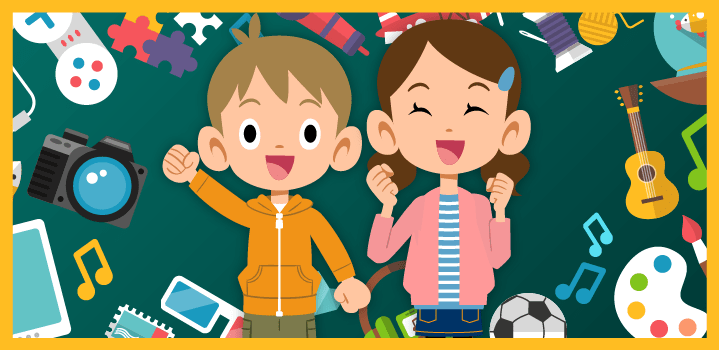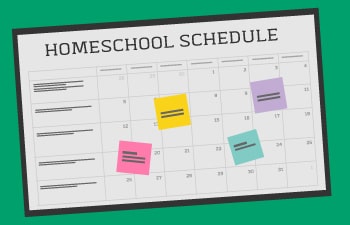There are so many benefits that come from homeschooling. One of those being the ability to engage students in the learning process to increase their focus and promote a higher level of critical thinking skills.
With a one-on-one approach, parents can easily identify learning opportunities for their students, based on their individual strengths, interests and challenges. When you have identified areas of weakness, you can create subject specific opportunities for learning that are tied to an interest of theirs. This will help them not only be motivated and enjoy learning, but eventually overcome those weaknesses.
Creating Learning Opportunities Based on Your Students’ Interests
So how exactly do you adopt a student-centered approach in your teaching to increase opportunities for learning and engagement? Let’s assume your elementary child is interested in dragons, your homeschool instruction may include activities like the following:
- Read, Read, Read: Encourage your child to read books on dragons. Read some books with him/her, and support independent reading. If your child only wants to read about dragons, honor that preference. He/she is still reading, and those skills are still developing. Eventually, your child will read other things (along with anything that can be found about dragons!).
- Sing Songs: Sing songs about dragons. This will activate different parts of your child’s brain while supporting language arts skills.
- Play Rounding Up the Rhyme: Find books, songs, poems and other examples of text (verbal or written) about dragons and help your child to identify the rhyming words. Have your child highlight or do a particular action when rhyming words are identified.
- Create Your Own Thematic Stories, Songs, and Poems: Spend time creating new stories, songs, and poems about dragons with your child. Infusing creativity into language arts will inherently build motivation, and focusing on a topic of interest will maximize that motivation. Again, eventually your child will write and create in other ways for other topics in addition to dragons.
- Record the Stories, Songs, and Poems: Collect the creative works your child completed about dragons in a scrapbook or video or some other form that will allow you and your child to revisit and reminisce about the dragon activities you both enjoyed while learning.
- Dramatic Play: Enjoy puppet shows or other acting activities around dragons. Get or make costumes and enable the creativity and language arts skill-building that accompanies dramatic play.
- Musical Play: Find music that relates to dragons and create dance movements to that music. Listen to background music from dragon movies in addition to songs about dragons. Explore classical music that might remind your child of dragons as well.
- Number Play: Use dragon figurines or poems/songs to learn to count, or create dragon word problems. Have your child learn measurement and other number-related skills through dragon drawings or stretch the interest a little to learn facts about dinosaurs.
- Write on Different Materials with a Variety of Drawing Tools: Have your child draw dragons, spell “dragon,” or work problems related to dragons on white boards, sidewalks, chalkboards, and windows. Use markers, chalk, finger paints, and shaving cream. Sometimes these simple changes can really benefit motivation.
- Junk Modeling: Use broken toys, recycling materials, and other ”junk” from around the house to create models of dragons. This will encourage flexible thinking and creativity in addition to supporting areas like physics and structure.
As another example, Rick LaVoie, in his book The Motivation Breakthrough: Six Secrets to Turning on the Tuned-Out Child, describes an independent project he created for a reluctant student who was really interested in professional football. He listed 25 independent and semi-independent assignments, of which the student had to do 20. The assignments included computation of the square footage of Giants Stadium (math), research on the shape and aerodynamics of the football (science), a letter to the Giants requesting season tickets (ELA), and a map of NFL franchises (geography). Providing choice gave the student a sense of power and ownership, and the well-done project was captured in a binder portfolio that could be shared with pride.
Creating Learning Opportunities Based on Your Child’s Activities of Interest
If your child has a fascination for Lego® bricks, there are tons of opportunities for learning to read, count and more. Check out this post full of fun literacy activities with LEGO® toys. By including their interests in activities throughout the learning process, students will strive to achieve their learning objectives more meaningfully.
Lego building may be a strength for your child, and as a parent, you want to maximize your child’s opportunities to use his/her strengths. This is particularly important if your child has some academic difficulties. Simply provide as many learning opportunities as you can for the activity that is of interest to your child and represents something for which he/she can be consistently successful.
You, as parents, are experts when it comes to knowing your child. Infusing your child’s interests into your homeschooling experience will increase your child’s engagement with the material as well as build confidence and enjoyment for both of you. If you are not sure how to incorporate your child’s interest in a certain activity, ask your child. You will be amazed!







